The Kawasaki H2 SX quickly became one of the favourite bikes Zane has ever tested! Check out his full video review below for this supercharged, sports touring monster...
Never in my career have I considered putting in an offer to buy a motorcycle after testing it. Sometimes the price is too high, sometimes I struggle to see the use in them and sometimes they’re just not my style. The 2022 Kawasaki Ninja H2 SX ended that streak.
The H2 SX is the only press bike I’ve serious sat down and considered dipping into my savings to buy instead of giving it back to Kawasaki. It’s in a league of its own in so many aspect’s that the only thing that held me back from buying it is my bank account. Check out my full video review above, or head to the link below to read my comprehensive test.
Read Zane’s H2 SX review here…
Kawasaki H2 SX Electronics Systems
The updated Ninja H2 SX features a number of technological firsts. It’s completely revised core system includes an FI-ECU with torque-demand capabilities, a new IMU that measures in all six DOF; and a compact, boost-circuit-equipped ABS with high computational power – all firsts for Kawasaki. Working in concert, they enable coordinated control of both engine output and brake force.
The new Ninja H2 SX is also the first Japanese mass-production motorcycle and the world’s first sports tourer to be equipped with Bosch’s Advanced Rider Assistance Systems (ARAS). Complemented by the new core system, ARAS uses millimetre – wave radar sensors mounted fore and aft to sense other vehicles in proximity to the Ninja H2 SX and provide three new features: Adaptive Cruise Control (ACC), Blind Spot Detection (BSD), and Forward Collision Warning (FCW).

The H2 SX is now equiped with a radar system to ensure fast emergency stops and active cruise control!
The new centrepiece of the cockpit is a large, easy-to-read 6.5in full-colour TFT instrument panel. In addition to smartphone compatibility, riders will be able to use the new infotainment app, Kawasaki SPIN, to install third-party telephone, music, navigation and other applications for use on the instrument panel. Engine fine-tuning offers cleaner emissions and improved fuel economy, and even slightly stronger mid-range torque.
A new upper cowl design elegantly incorporates the ARAS equipment while giving the Ninja H2 SX a fresh look. Improved heat management, revised seat design, and other updates that contribute to increased rider comfort are complemented by new flagship convenience features like KIPASS and TPMS – all increasing the bike’s touring capability.
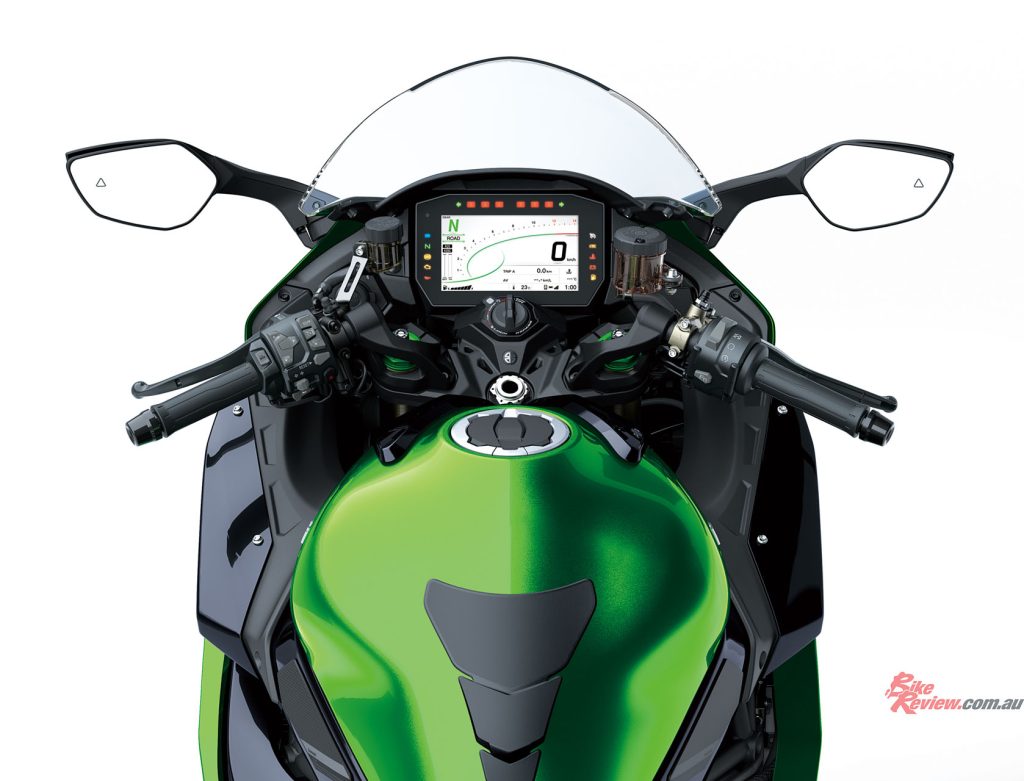
“High-grade full colour display features TFT (thin-film transistor) technology, delivering a high level of visibility.”
High-grade full colour display features TFT technology, delivering a high level of visibility. The screen’s background colour is selectable (black, white or automatic switching), and screen brightness adjusts automatically to suit available light.
KIPASS (Kawasaki’s Intelligent Proximity Activation Start System) is a master key system that allows remote activation of the bike’s main switch and steering lock. The system offers increased convenience while acting as a deterrent to theft and vandalism. With the compact key fob (portable immobiliser) in a pocket, KIPASS allows riders to remotely release the bike’s steering lock and main switch simply by approaching the bike.
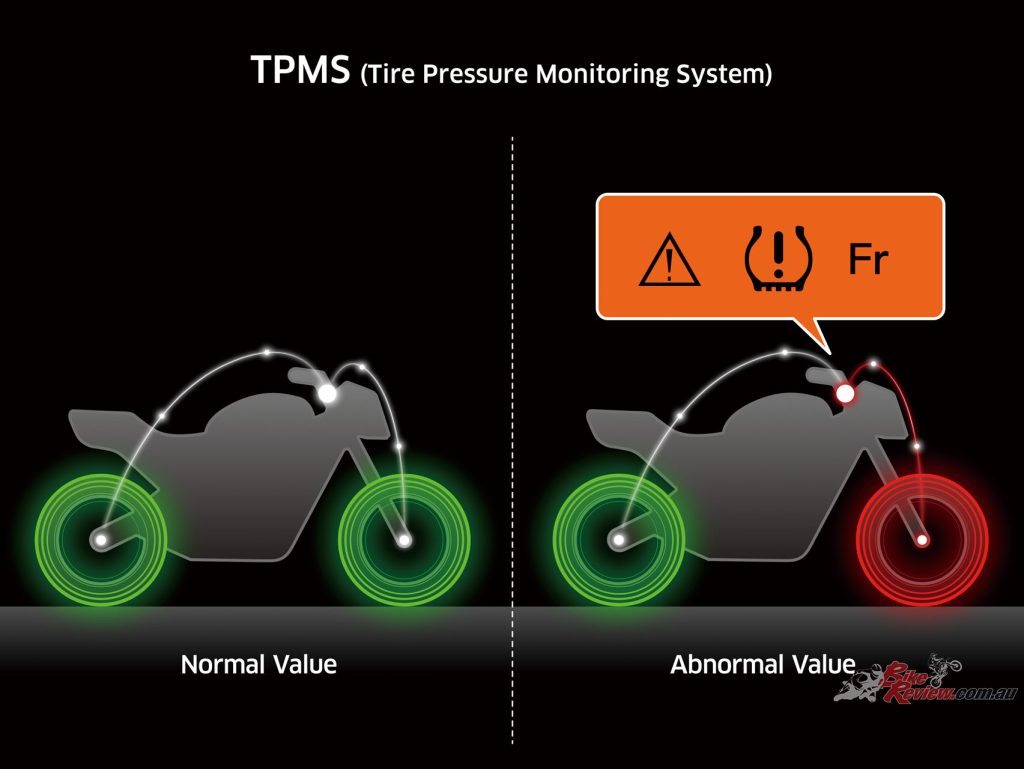
“TPMS continuously monitors tyre air pressure while riding, adding to rider reassurance on long tours.”
TPMS continuously monitors tyre air pressure while riding, adding to rider reassurance on long tours. To alert riders to any tyre pressure irregularities, tyre pressure sensors are fitted as standard equipment. The system allows the rider to monitor tyre pressure while underway. When tyre pressure falls below 220kPa, a low-pressure warning is displayed. The ability to take into account temperature changes and display values recalculated for 20°C helps prevent false warnings when air expands as the tyres warm up.
The Ninja H2 SX is Kawasaki’s first model to integrate an FI-ECU with torque-demand capabilities; new IMU that measures in six DOF; and a compact, boost-circuit-equipped ABS with high computational power. Working in concert, they enable coordinated control of both engine output and brake force. With more sophisticated torque-demand capabilities, the new FI-ECU is able to adjust torque in response to external direction, which enables it to work in concert with the ABS. This coordinated control of both the engine and brakes is essential for delivering smooth operation in systems like Adaptive Cruise Control.
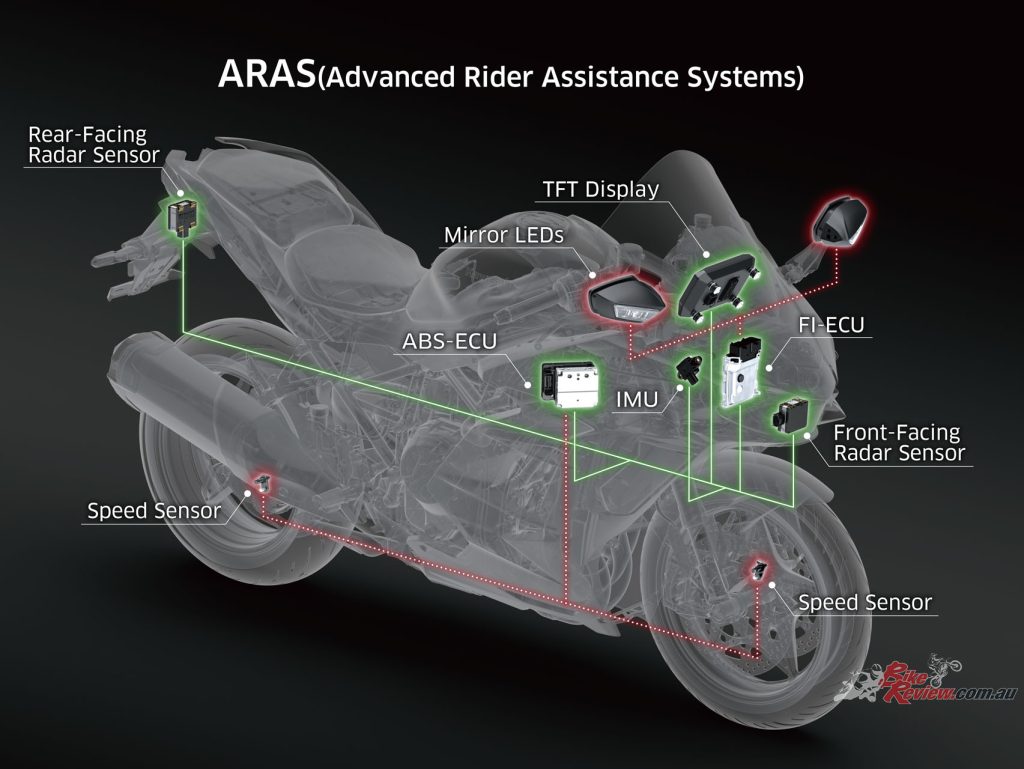
“The Ninja H2 SX is Kawasaki’s first model to integrate an FI-ECU with torque-demand capabilities; new IMU that measures in six DOF; and a compact, boost-circuit-equipped ABS with high computational power.”
IMU (Inertial Measurement Unit) enables inertia along 6 DOF (degrees of freedom) to be monitored. With the new unit, acceleration along longitudinal, transverse and vertical axes, plus roll rate, pitch rate and yaw rate are all measured (previously, yaw rate was calculated). Feedback from the IMU is used to give a clearer real-time.
A more advanced version of Electronic Cruise Control, ACC maintains the speed set by the rider, but adjusts the vehicle speed to maintain a suitable following distance from the vehicle in front. Front-facing radar sensor uses millimetre-wave radar to scan ahead in the rider’s lane. (The radar scans in a narrow path to focus on targets in the same lane.) The ABS-ECU obtains information from the radar, IMU, FI-ECU (front/rear wheel speed), as well as the instrument panel (rider-selected distance setting). When the distance to the vehicle in front is deemed insufficient, the ABS-ECU directs torque to be reduced.
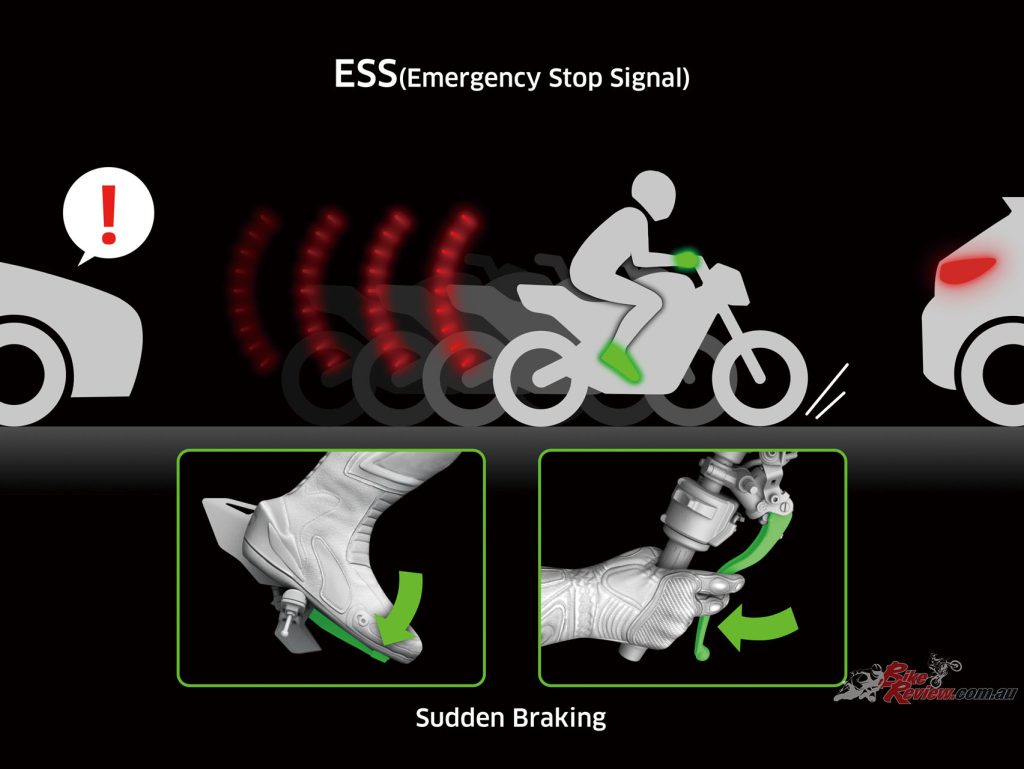
Emergency Stop Signal identifies sharp braking and will flash the tail light to gain the attention of drivers behind.
When the system determines that continuing at the current speed may result in a collision with the vehicle in front, it warns the rider. Front-facing radar sensor monitors the distance and speed of the vehicle in front. When a vehicle is in close proximity and there is danger of a collision should the current speed be maintained, the system alerts the rider using a bright flashing red LED light above the instrument panel. A warning is also shown on the TFT display.
The rear-facing radar sensor monitors the bike’s surroundings and alerts the rider to presence of a vehicle approaching in the rider’s blind spot. Rear-facing radar sensor scans behind in the lanes to the left and right of the rider. When an approaching vehicle is detected, an LED built into
the rearview mirror will light up. (While common in the automotive world, this is the first use of mirror LEDs in the motorcycle industry). Should the rider indicate the intent to change lanes by switching on their turn signal while a vehicle is detected in a blind spot, the mirror LED will flash.
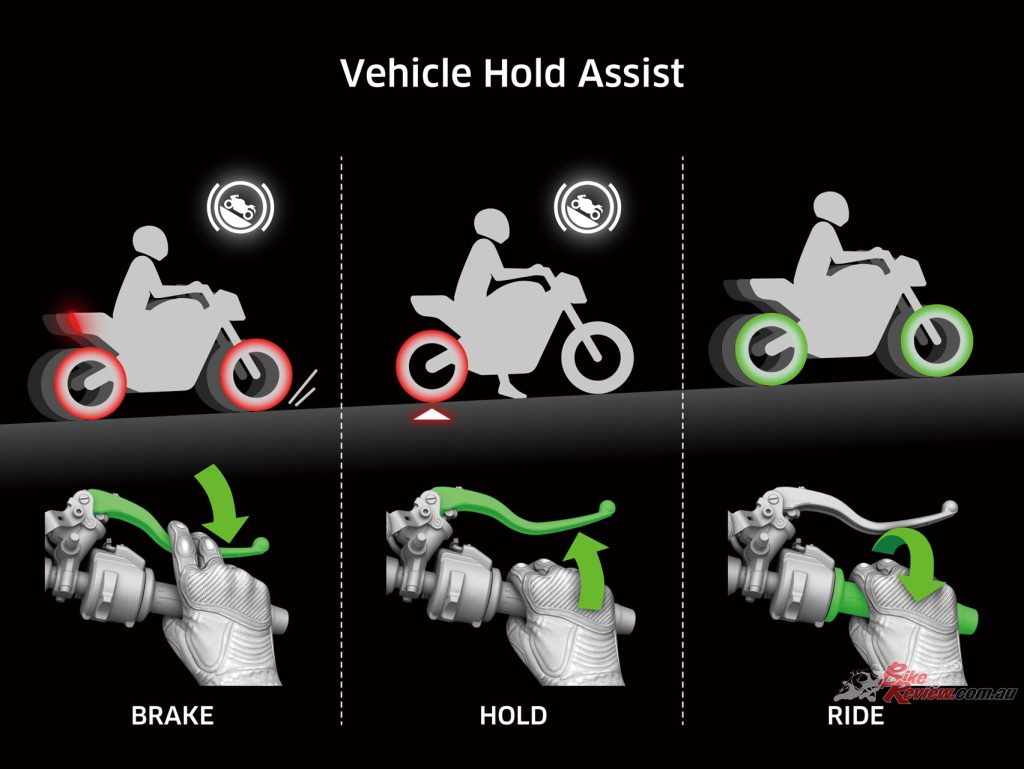
“Activated when the rider has stopped and firmly applies the brake(s), VHA (Vehicle Hold Assist) engages the rear brake to allow the rider to relax their brake hand.”
Activated when the rider has stopped and firmly applies the brake, VHA (Vehicle Hold Assist) engages the rear brake to allow the rider to relax their brake hand. In addition to brake fluid pressure, the ABS-ECU examines information from the IMU (degree of road slope) and FI-ECU (front/rear wheel speed, throttle position, and side stand switch) to determine whether operation conditions have been met.
When the rider has stopped, VHA is initiated after the rider exerts a given amount of pressure (to either the front and/or rear brake). The ABS pump exerts pressure to engage the rear brake, and a light/signal is indicated on the instrument panel to let the rider know that they can relax their brake hand and the bike will remain in place. The system disengages automatically when the rider turns the throttle to accelerate, when the side stand goes down, or 10 minutes after activation. The rider can also disengage the system by quickly squeezing and releasing the brake lever (within 1 second).
The other systems which were standard on previous year model H2 SX’s are also on the 2022 model. Including: Emergency Stop Signal, KCMF (Kawasaki Cornering Management Function), KTRC (Kawasaki Traction Control), KLCM (Kawasaki Launch Control Mode), KIBS (Kawasaki Intelligent anti-lock Brake System), Kawasaki Engine Brake Control, Power Modes: Full, Middle and Low and Integrated Riding Modes: Sport, Road, Rain, Rider (manual).
2022 Kawasaki H2 SX Specifications
Kawasaki.com.au
Price: $35,947 rideaway
Warranty: Two-years unlimited km
Claimed Power: 147kW[200hp]@11000rpm
Claimed Torque: 137.3Nm@8500rpm
Wet weight: 267kg
Fuel Capacity: 19L
Fuel Consumption: 6.7-7.5L/100km
Engine: Liquid-cooled, transverse-four, DOHC, 16 valves, 998cc, 76 x 55mm bore x stroke, 11.2:1 compression ratio, dual injection 40mm throttle-bodies, Kawasaki supercharger, KTRC, KLCM, KEBC, QKS, Gearbox: Six-speed with quickshift Clutch: Wet multi-plate slipper
Chassis: Trellis, high-tensile steel, with Swingarm Mounting Plate
Rake: 24.7, Trail: 103mm
Suspension: 43mm inverted fork with rebound and compression damping and spring preload adjustability, and top-out springs, 120mm travel, New Uni Trak, gas-charged shock with piggyback reservoir, compression (high/low-speed) and rebound damping adjustability, remote spring preload adjuster, and top-out spring, 139mm travel.
Brakes: KIBS, dual 320mm rotors, Brembo radial four-piston calipers, single rear 250mm rotor, twin-piston caliper
Wheels & Tyres: Cast aluminium star-pattern five-spoke wheels, 120/70 x 17in, 190/55 x 17in.
Dimensions:
Wheelbase: 1480mm
Ground clearance: 130mm
Seat height: 835mm
Overall height: 1260mm
Overall length: 2175mm
Overall width: 790mm
Instruments & Electronics: Full TFT display,
Editor’s Note: If you are reading this article on any website other than BikeReview.com.au, please report it to BikeReview via our contact page, as it has been stolen or re-published without authority.
The Verdict | Video Review: 2022 Kawasaki H2 SX


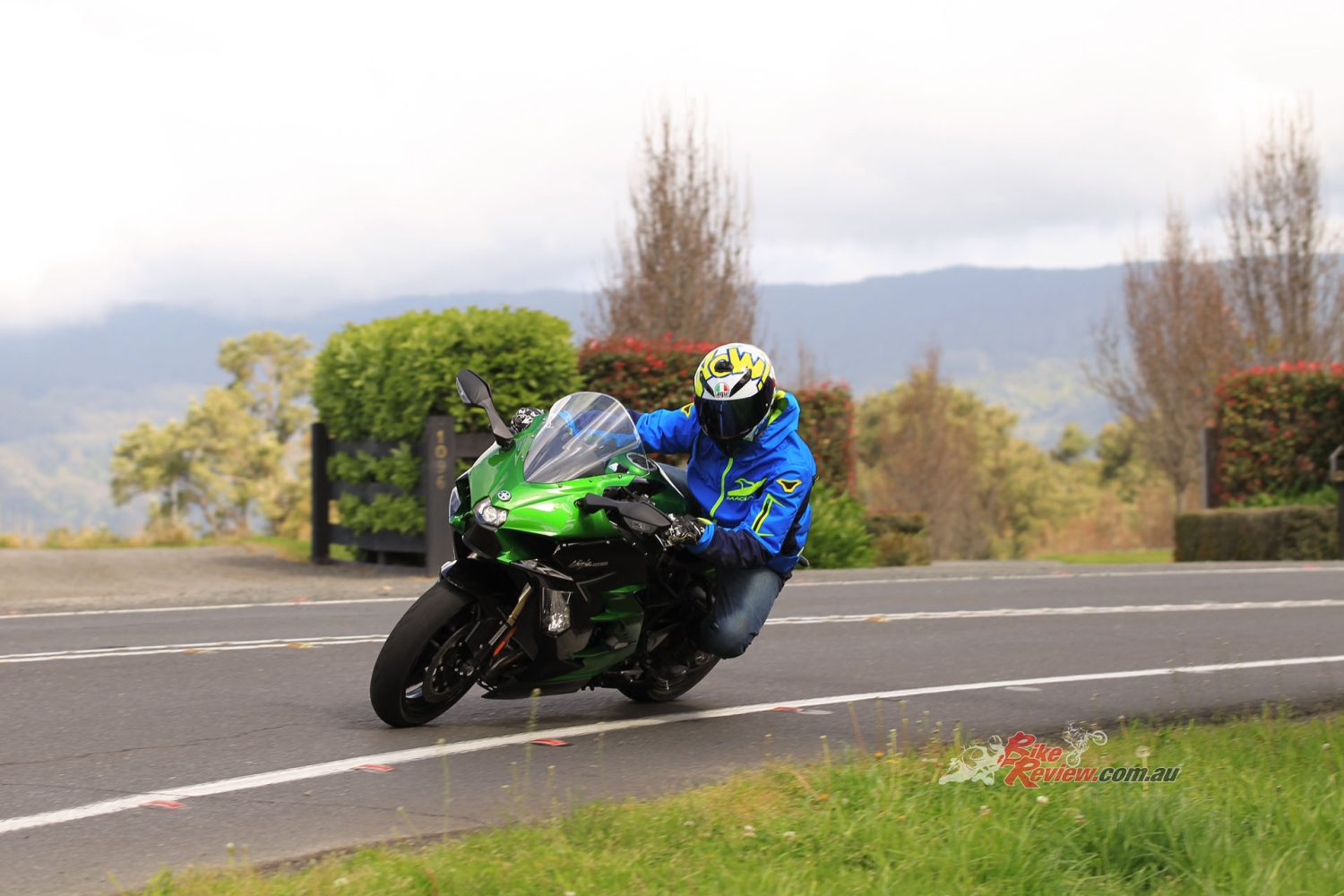

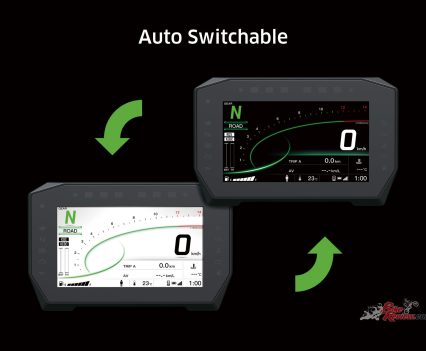
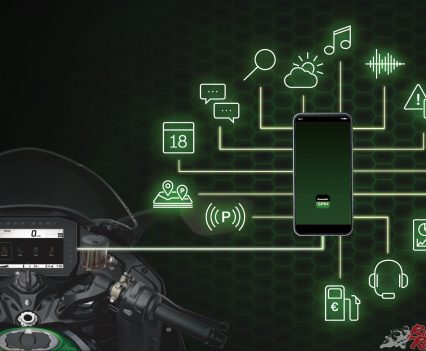



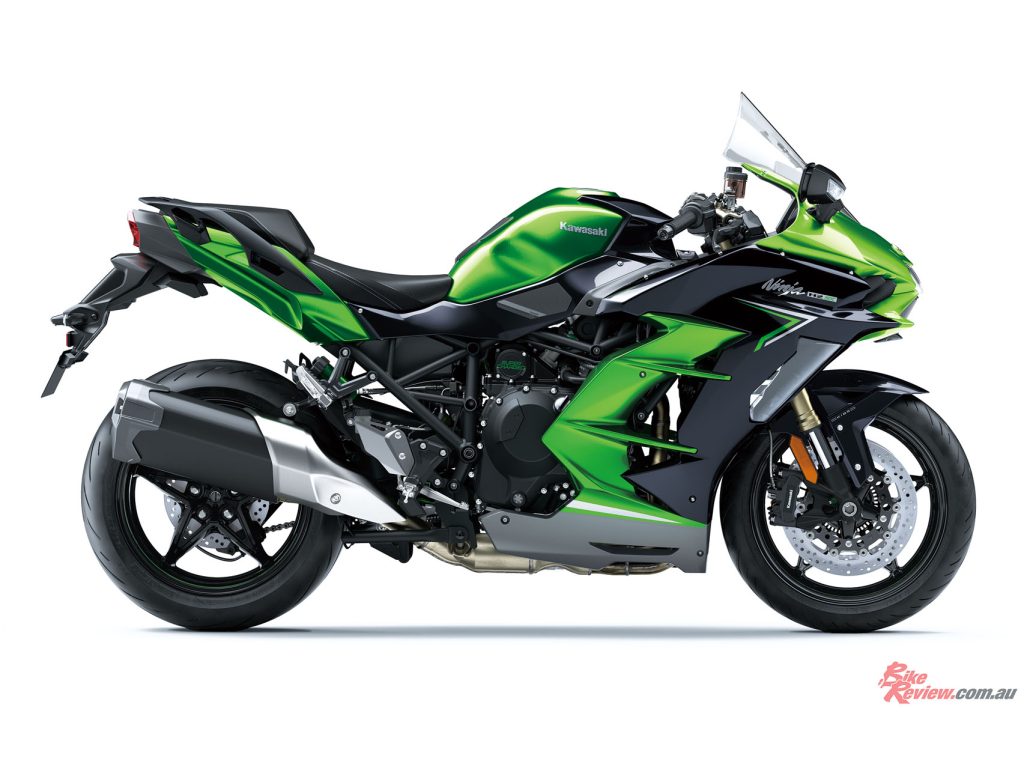

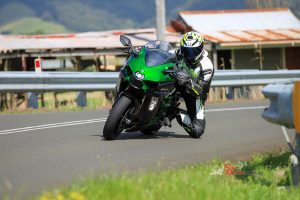
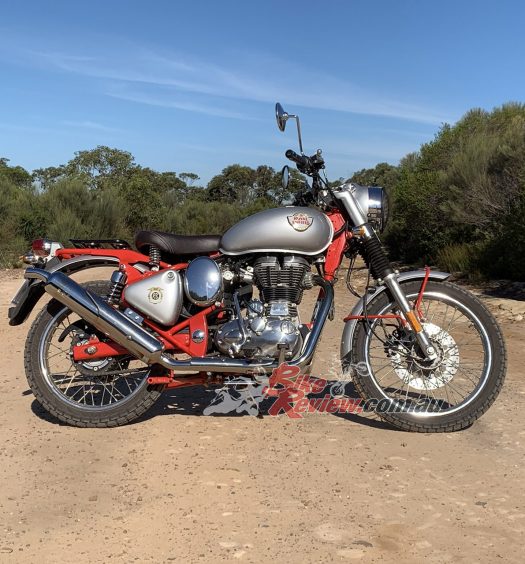
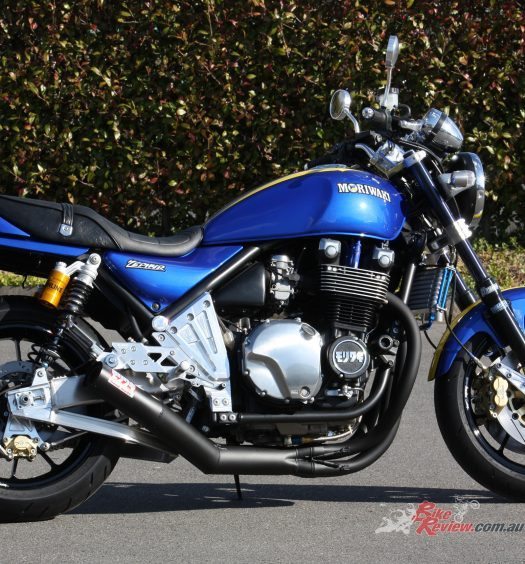




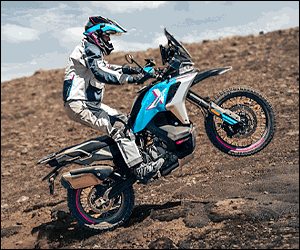









February 25, 2023
One of the things that separates real motorcyclists from armchair versions is our willingness to go into debt to attain our dream. Clearly you’re not in that category.